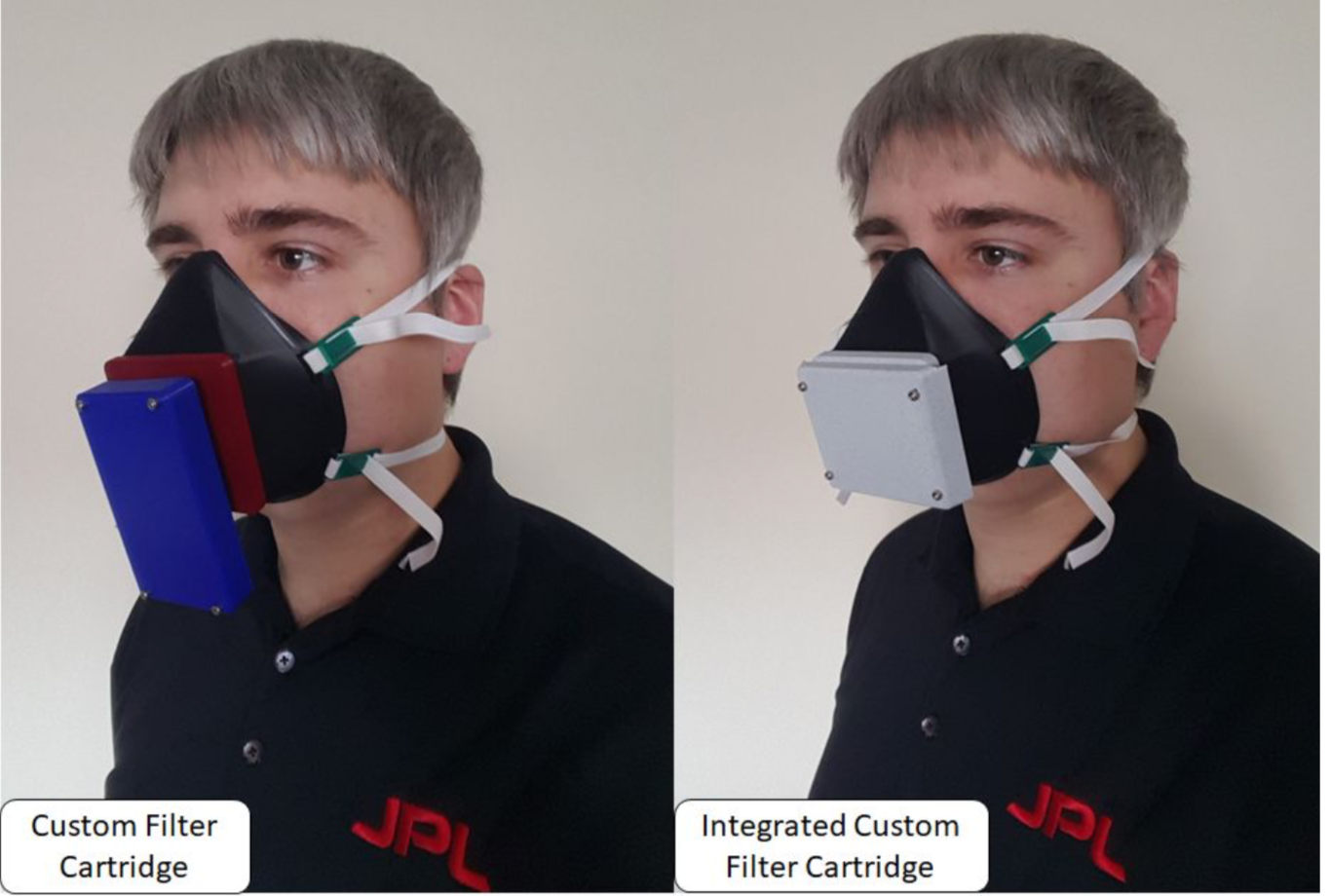-
Notifications
You must be signed in to change notification settings - Fork 20
JPL Performance Respirator
Quick Specifications:

The performance respirator design attempts to mimic the face seal geometry of commercial half-face respirators, such as those from 3M, to provide the highest level of fit performance. This is achieved through the use of a two piece assembly that consists of both a flexible and rigid element. The rigid element provides effective attachment for external filter cartridges while the flexible element has an internal lip to provide a conformal seal against the user’s face. The design also allows the front rigid section to be exchanged for compatibility with a wide range of different filter configurations while preserving the face seal and mounting straps.
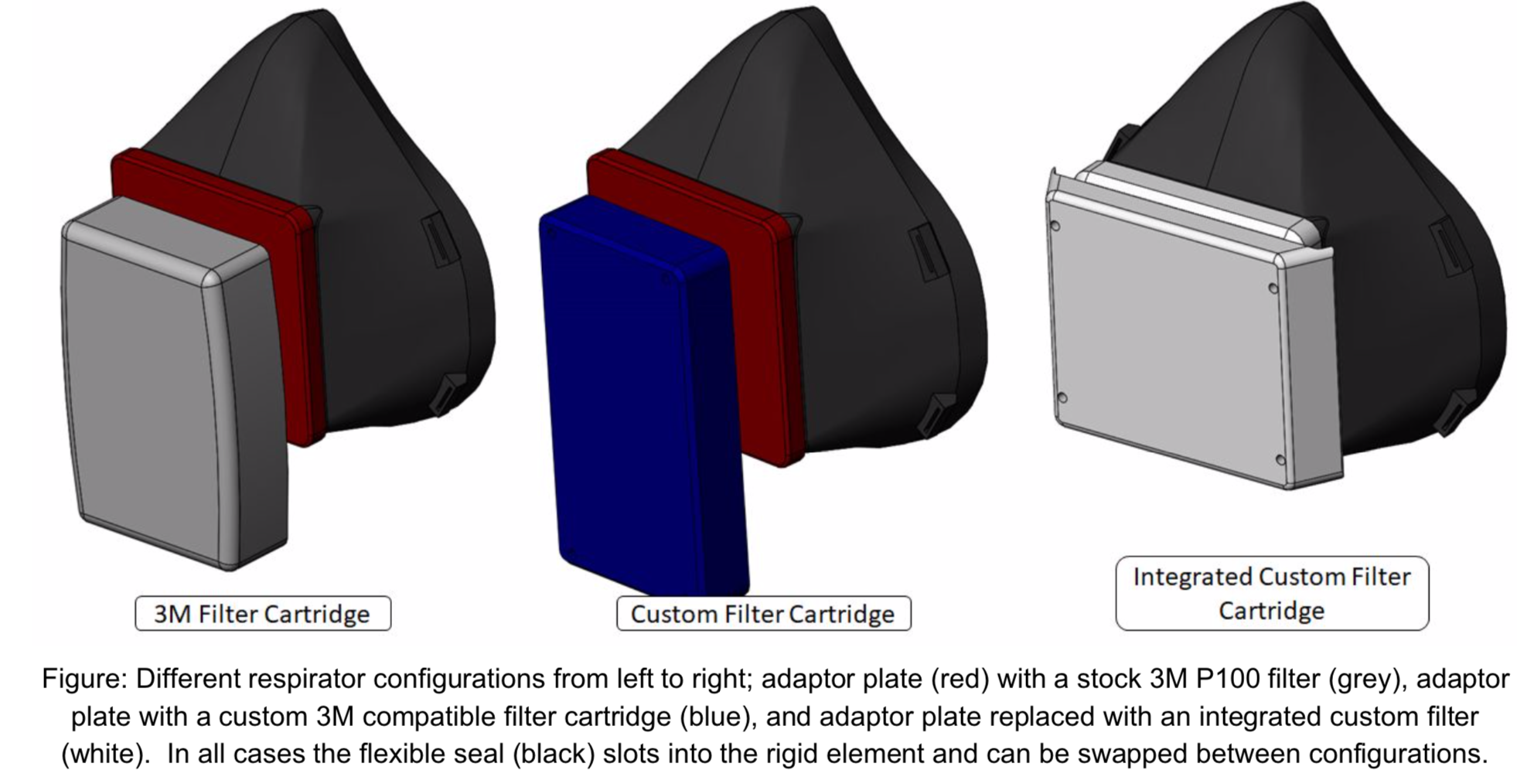
The performance respirator design can be easily configured for use with different filter types by swapping the front rigid element. By swapping the front rigid element, the respirator can currently be arranged in two different configurations; front adapter compatible with COTS/custom filter cartridges or with a compact integrated custom filter.
- Filter Cartridge Mount - In this configuration the rigid section consists of a cover plate that slots into the flexible face seal and provides a filter cartridge attachment point. Currently, the design is configured to be compatible with 3M filter cartridges but the intent is to provide options based on community input.
- Integrated Custom Filter - In this configuration the front rigid section consists of two pieces with an integrated pleated filter (total surface area of 98 cm2) and provides the most compact arrangement that can fit under a standard face shield. Intake and exhaust both pass through the filter medium and are routed to the sides of the respirator. Additional information on the custom integrated filter can be found in the “Custom Filters” section.
The following subsections will describe the tools/equipment required, materials used, fabrication process, assembly guide.
- FDM 3D printer
- Standard 0.4 mm print nozzle
- Print area must be greater than 15x15 cm.
- Capable of printing TPU (direct drive extruder recommended)
- Xacto blade or similar
- Calipers (optional)
- PLA or PETG Filament - Used for rigid components
- PETG is recommended for higher temperature and chemical resistance.
- Shore 95A TPU Filament - Used for flexible face seal.
- Ninjaflex Cheetah and Polymaker Flex have been tested.
- 3/8 “ Elastic Banding (36” Length) - Standard elastic banding for sewing is sufficient.
- 3/32” Thick Foam or Equivalent - Used for the cartridge attachment point seal.
- Compliant foam such as a contact shelf liner would work.
- Filter Medium - An appropriate filter medium for use with the integrated filter.
- HEPA vacuum bag material (Kenmore brand) currently tested. Note, currently not NIOSH certified for medical use.
- Additional information in the custom filter section.
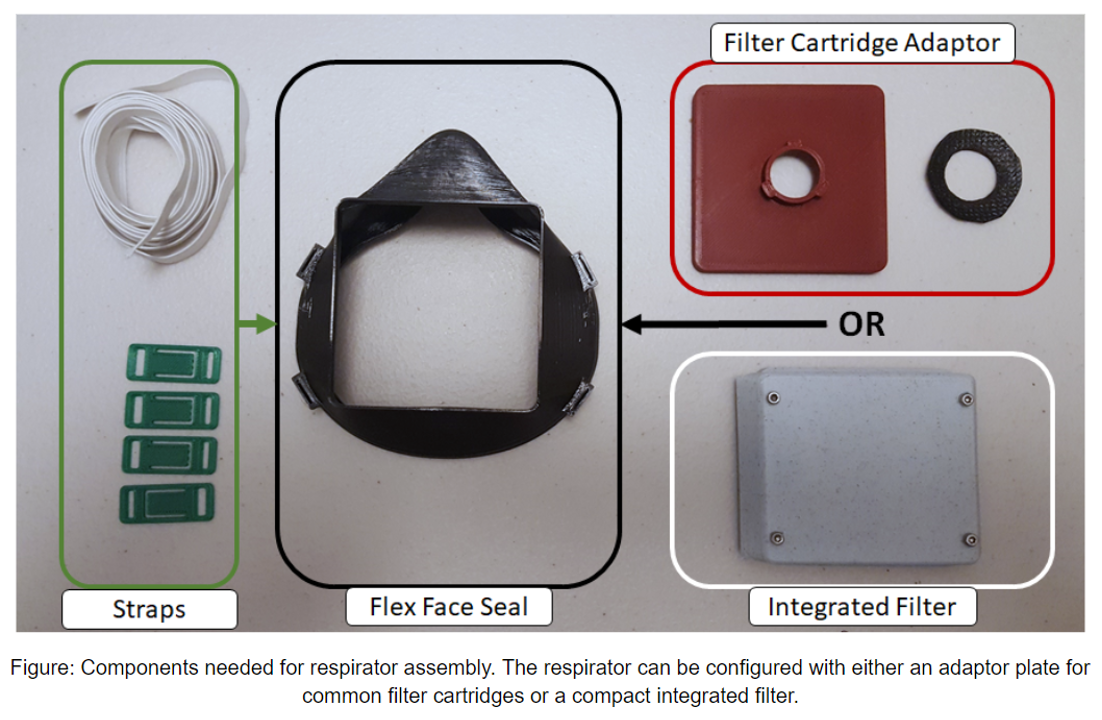 The standard version compatible with stock filter cartridges consists of only 9 components. Below is a short description of each part with fabrication guidelines. Note, the integrated filter cartridge version follows the same process but swaps the filter cartridge adaptor for the integrated filter.
The standard version compatible with stock filter cartridges consists of only 9 components. Below is a short description of each part with fabrication guidelines. Note, the integrated filter cartridge version follows the same process but swaps the filter cartridge adaptor for the integrated filter.
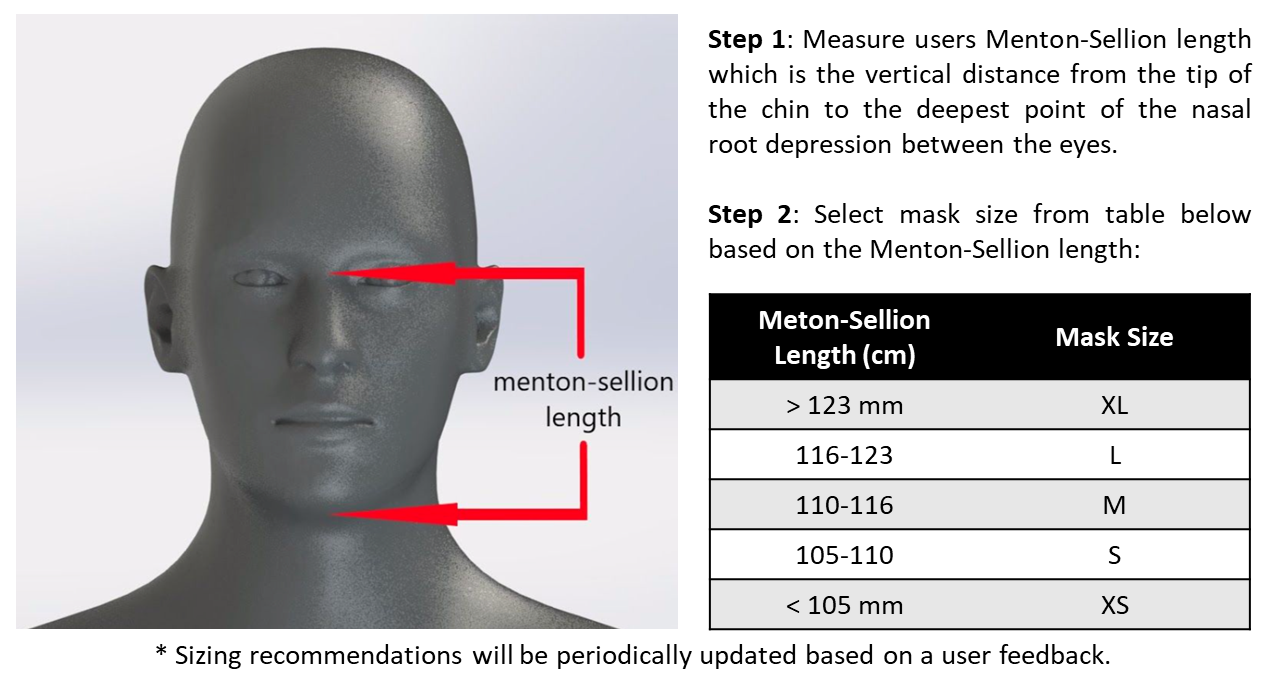
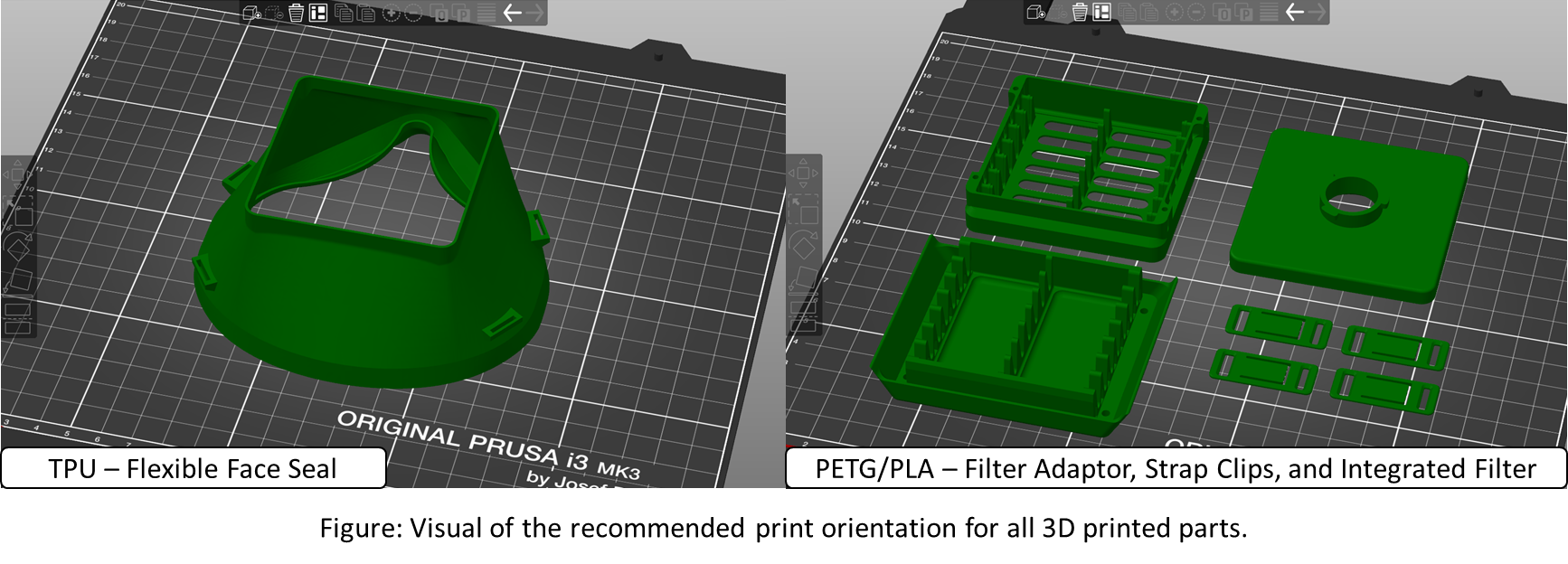
-
1x Flexible Face Seal - The flexible face seal should be printed first from a 95A TPU material in a size appropriate for the user.
- Material - Shore 95A TPU (NinijaFlex Cheetah and Polymaker Flex have both been verified to work)
-
Print Settings - 0.2 mm layer height, 2 perimeters, 0.48 mm extrusion width, and seam position "nearest". For other settings use default values for a flex a semi-flex material.
- Note the majority of the part should be printed with two walls. If an intermittent third wall is present it will cause excessive retractions/travel moves, increase the line width.
- Notes - If calipers are available, measure the thickness of the front lip. This value can be used to select the appropriate rigid adaptor size.
-
1x Rigid Adaptor Plate
- Material - PLA or PETG
- Print Settings - 0.2 mm layer height, 3 perimeters, and 10% infill. For other settings use default values.
- Notes - Multiple files are provided to allow for variation in print tolerances. For each file the end designator indicates the size the slot used to interface with the flexible face seal. Start with the 850 version (0.85 mm) but use the larger or smaller slot size if the fit is tight or loose respectively.
-
4x Strap Adjustment Clips
- Material - PLA or PETG
- Print Settings - Normal print settings.
- Notes - None.
-
1x Integrated Filter (Option)
- Material - PLA or PETG
- Print Settings - 0.2 mm layer height, 3 perimeters, and 10% infill. For other settings use default values.
- Notes - Instructions for the integrated filter assembly are provided in the “Custom Filters” section. During assembly the integrated filter will simply take the place of the filter adaptor plate.
- 1x Filter Cartridge Seal - Please reference designs respirator designs 2 & 3 for instructions on cutting the foam ring seals.
- 2x Straps - Cut two strips to a length of 46 cm (18”). This can be increased or decreased based on user preference.
General fabrication notes and tips are provided here and will be periodically updated based on user feedback.
- PLA is very easy to print but has a low softening temperature and is susceptible to warping at elevated temperatures (such as in the hot interior of a parked vehicle during the summer). If you expect that respirator may be stored in a location where the temperature can exceed 100 oF, the use of PETG is recommended.
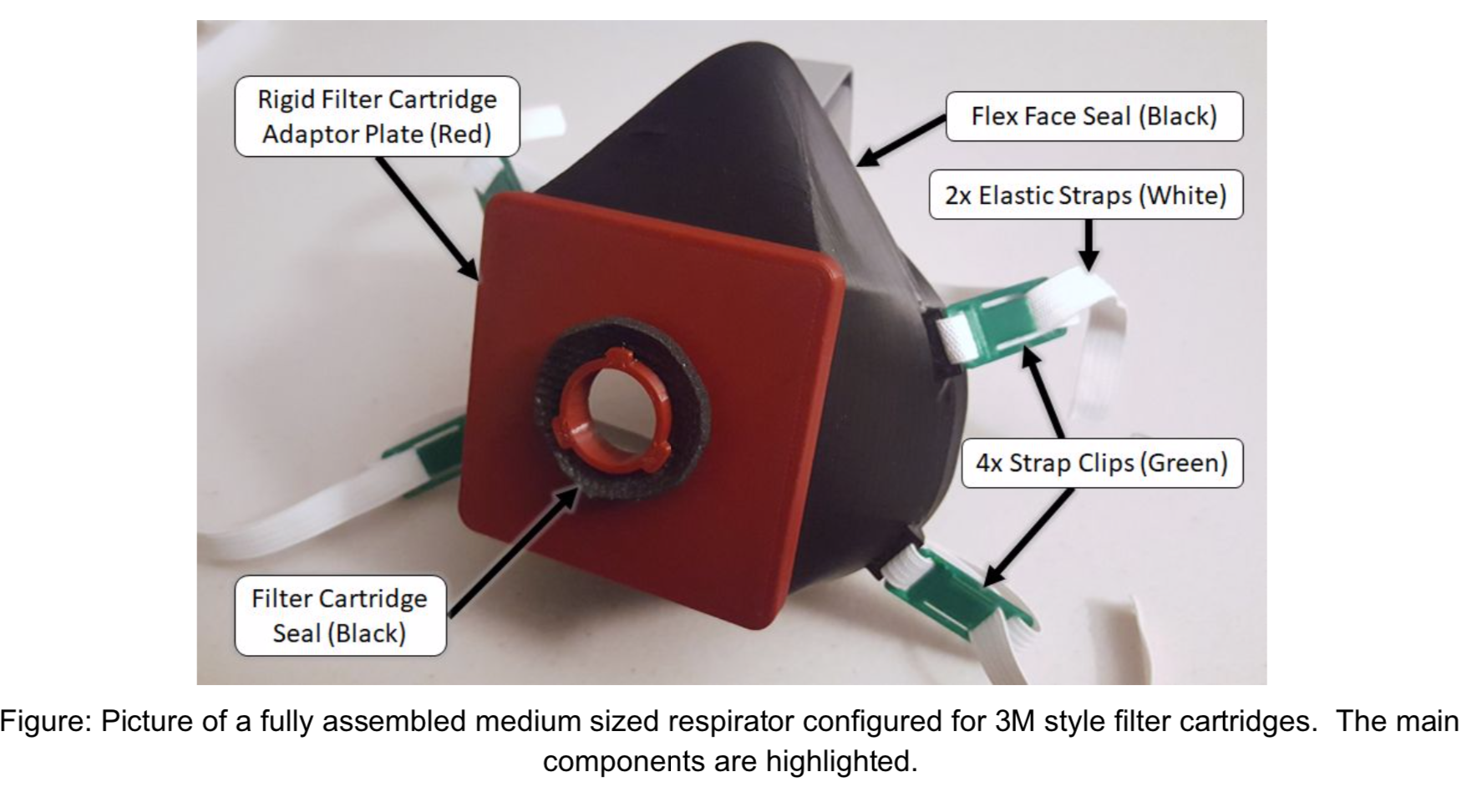 Once the required parts are printed, this is the basic assembly process (refer to pictures below):
Once the required parts are printed, this is the basic assembly process (refer to pictures below):
- Prepare the flexible face seal section. Pull away any stringers and left from the printing process.
- Slot the top lip of the flexible face seal into the matching groove on the rigid filter cartridge adaptor plate or integrated filter cartridge. This connection is meant to be snug as it seals the rigid element against the flex face seal. a. If the connection is either too loose or tight reprint the rigid element with the corresponding smaller or larger slot size version respectively. Groove sizes of 0.8, 0.85, and 0.9 mm are provided (0.85 mm is default). Different printers will vary in dimensional tolerance so this will have to be checked on a case by case basis.
- Place the filter cartridge seal ring over the cartridge attachment point on the rigid front plate.
- Attached straps through the mount points on the flexible face seal using the strap clips to allow for length adjustment. Alternately the straps can simply be tied off.
- Attach filter cartridge if required.
- Test fit and adjust strap tension as required.
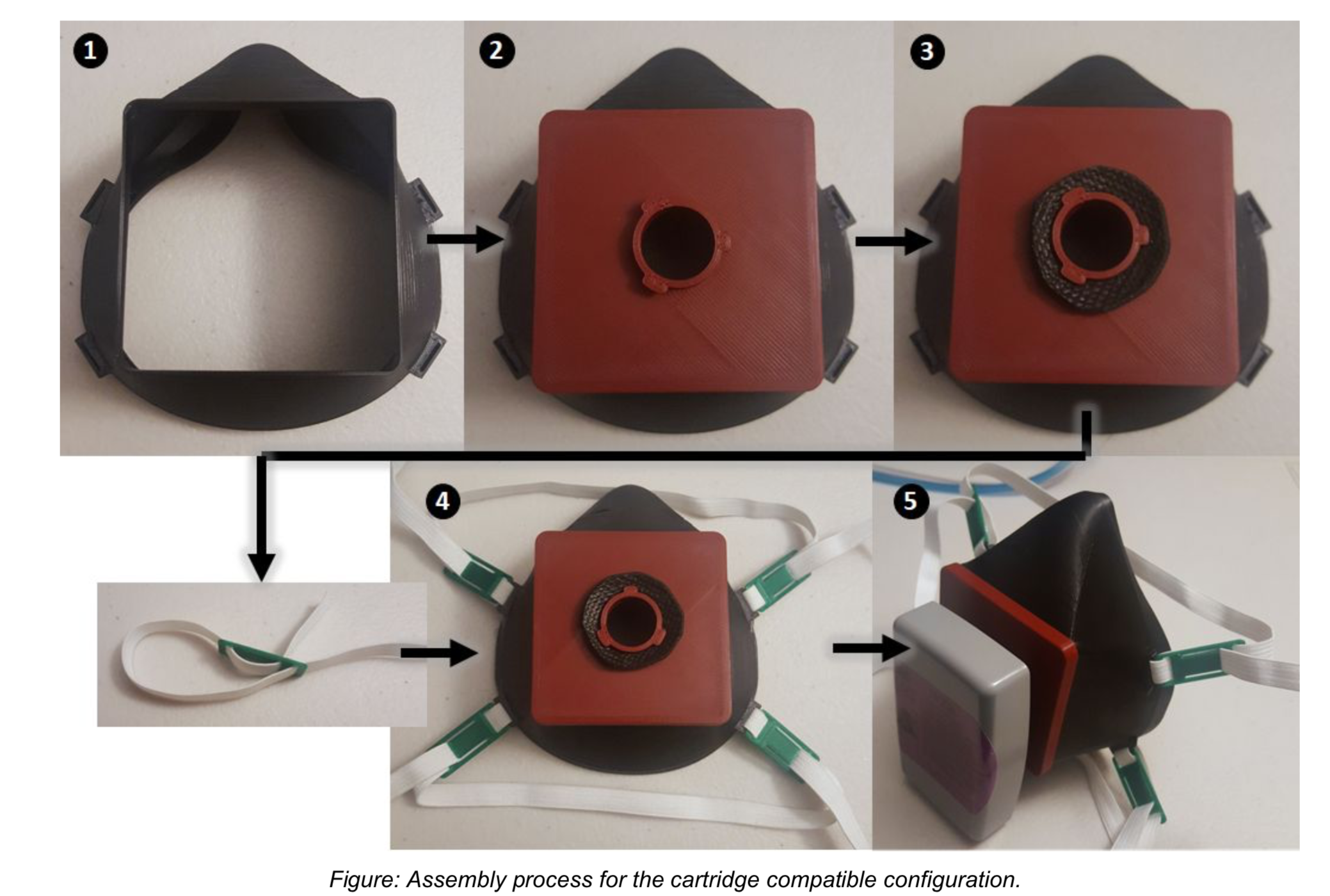
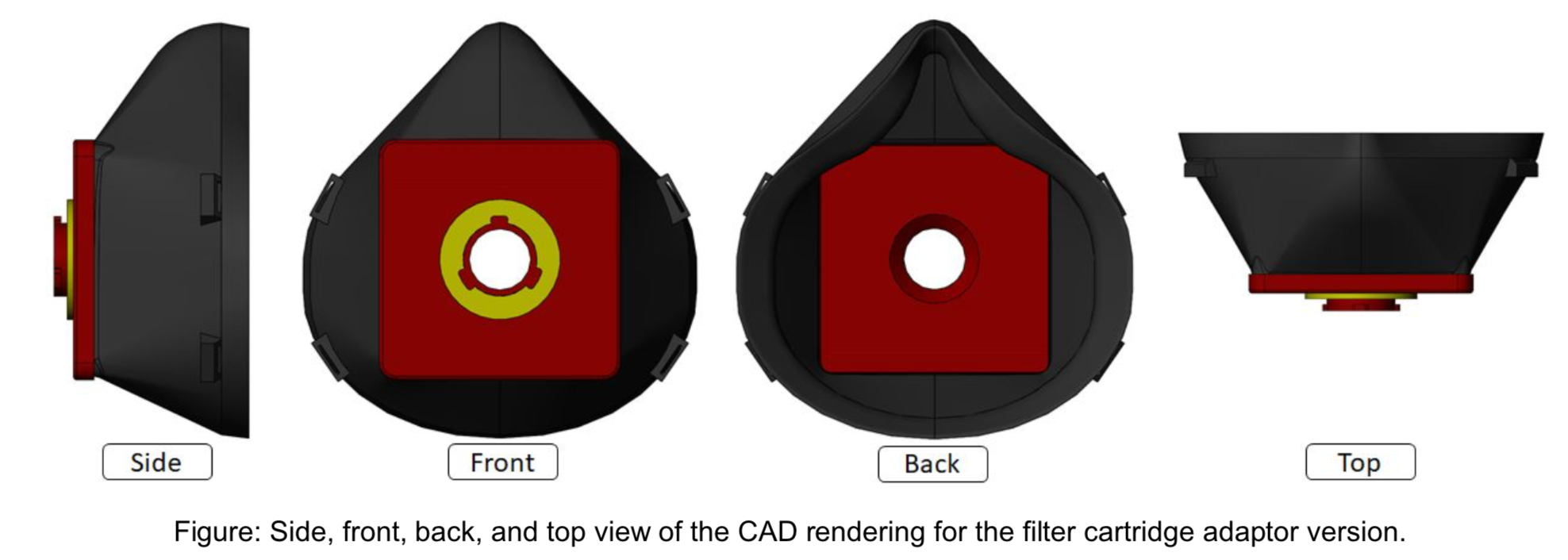
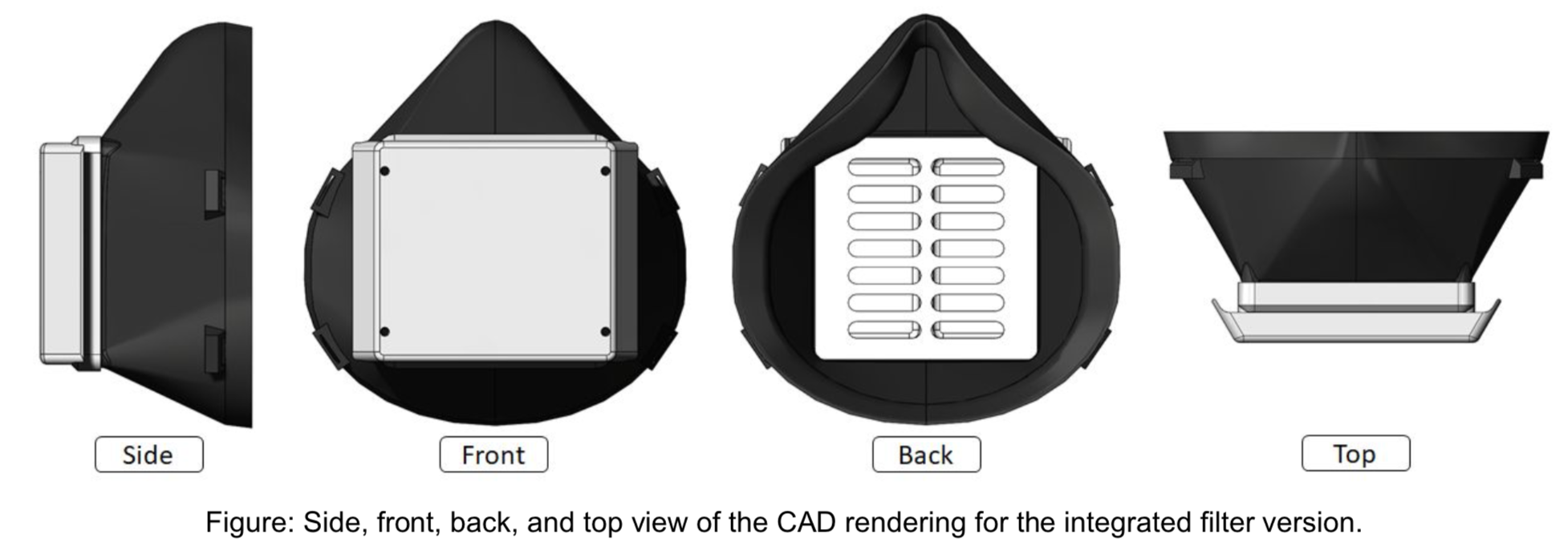
- Design explained: The Comfort Respirator designer gives a tutorial about the design and how to make the respirator. https://youtu.be/cCuwTTd6JnU
- You can hear me now: The JPL designer of the 3D printable COVID-19 Comfort Respirator describes the design of how you can now hear someone speak who is wearing the respirator. https://youtu.be/Oa1V1hawjeE
- 05/01/2020
- Uploaded revised face seal files (now v9). Improved printability, reduced overall print time, and reduced potential for unwanted stringing.
- 04/30/2020
- Corrected foam seal thickness to 3/32".
- 04/29/2020
- Added mask sizing chart.
- Added additional print setting details for the TPU face seal.
- Added image for indicating recommended print orientation.
- Made a number of text corrections throughout document.
- A number of formatting changes to improve readability.
- 04/28/2020
- Added quick specification summary table.
- Made a number of text corrections throughout document.
- Added changelog.
